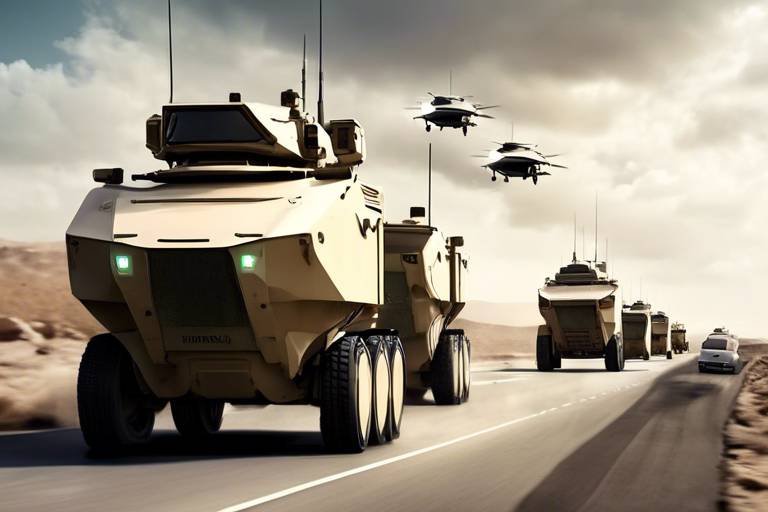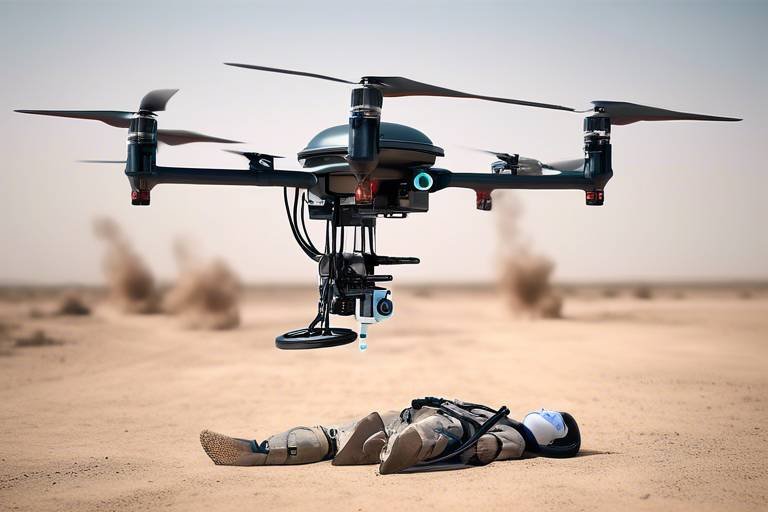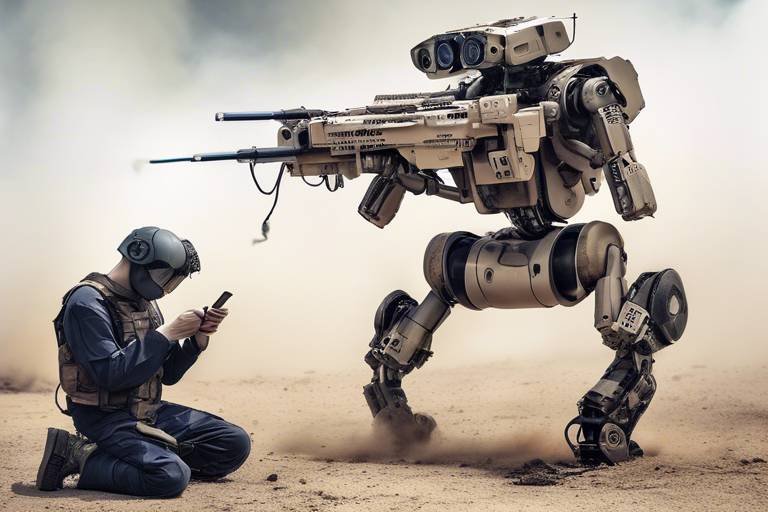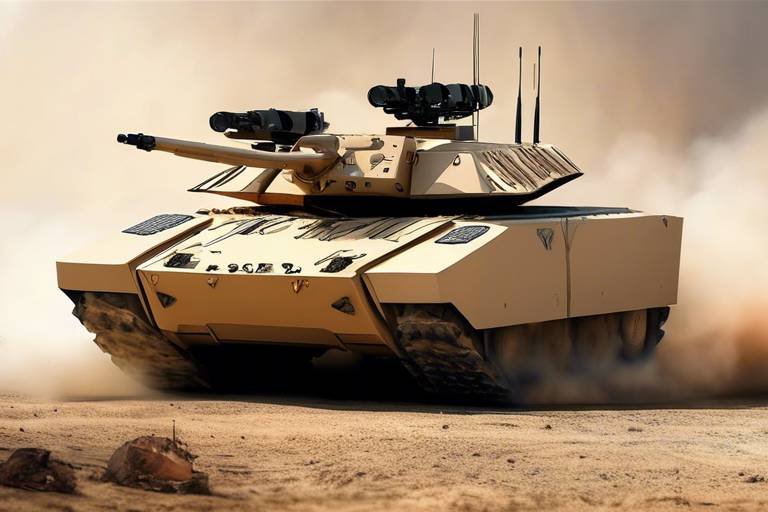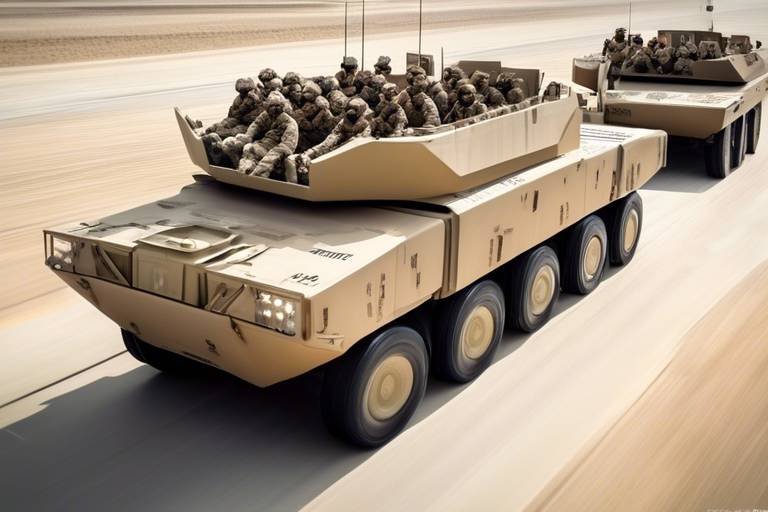Exploring the Future of Military Logistics Automation
The world of military logistics is on the brink of a transformation like never before. As we delve into the future of military logistics automation, it’s essential to recognize that this isn't just about technology; it's about revolutionizing the way armed forces operate. Imagine a battlefield where supply chains are seamlessly integrated, where the right resources are delivered precisely when and where they are needed, and where human error is minimized. This is the promise of automation in military logistics, a field that is rapidly evolving thanks to groundbreaking advancements in technology.
At its core, military logistics automation is about enhancing efficiency and effectiveness. With the stakes as high as they are in military operations, the need for timely and accurate logistics has never been greater. Automated systems are stepping in to streamline supply chain management, ensuring that troops have what they need to succeed in the field. From predictive analytics that anticipate needs to autonomous vehicles that deliver supplies, the future is bright with possibilities.
But what does this mean for the soldiers on the ground? Picture a scenario where drones are not only delivering supplies but also gathering intelligence about the battlefield, or where AI is analyzing data in real-time to make logistical decisions. This level of integration can significantly enhance operational readiness and responsiveness, making military forces more agile and capable of adapting to rapidly changing environments.
As we explore the implications of these advancements, it’s crucial to consider the technologies driving this change. Innovations such as Artificial Intelligence (AI), robotics, and the Internet of Things (IoT) are at the forefront of this revolution. They are not just buzzwords; they represent a new era in military logistics that promises to change the game entirely. By leveraging these technologies, military logistics can become more predictive, efficient, and resilient, ultimately leading to better outcomes on the battlefield.
However, with great power comes great responsibility. As military logistics becomes more automated, challenges will inevitably arise. Issues such as cybersecurity risks, integration with existing systems, and the need for skilled personnel to manage these advanced technologies must be addressed. The future of military logistics automation is not without its hurdles, but the potential benefits far outweigh the challenges.
- What is military logistics automation? Military logistics automation refers to the use of advanced technologies, such as AI and robotics, to streamline and enhance logistics operations within military settings.
- How does automation improve military logistics? Automation improves military logistics by increasing efficiency, reducing human error, and enabling real-time decision-making, which is crucial in high-stakes environments.
- What are the main technologies driving military logistics automation? Key technologies include Artificial Intelligence (AI), robotics, and the Internet of Things (IoT), all of which contribute to smarter and more responsive logistics systems.
- What challenges does military logistics automation face? Challenges include cybersecurity risks, integration with legacy systems, and the need for skilled personnel to operate and maintain automated systems.
- What does the future hold for military logistics automation? The future is expected to see significant advancements in automation technologies, leading to more efficient supply chains and improved operational readiness for military forces.
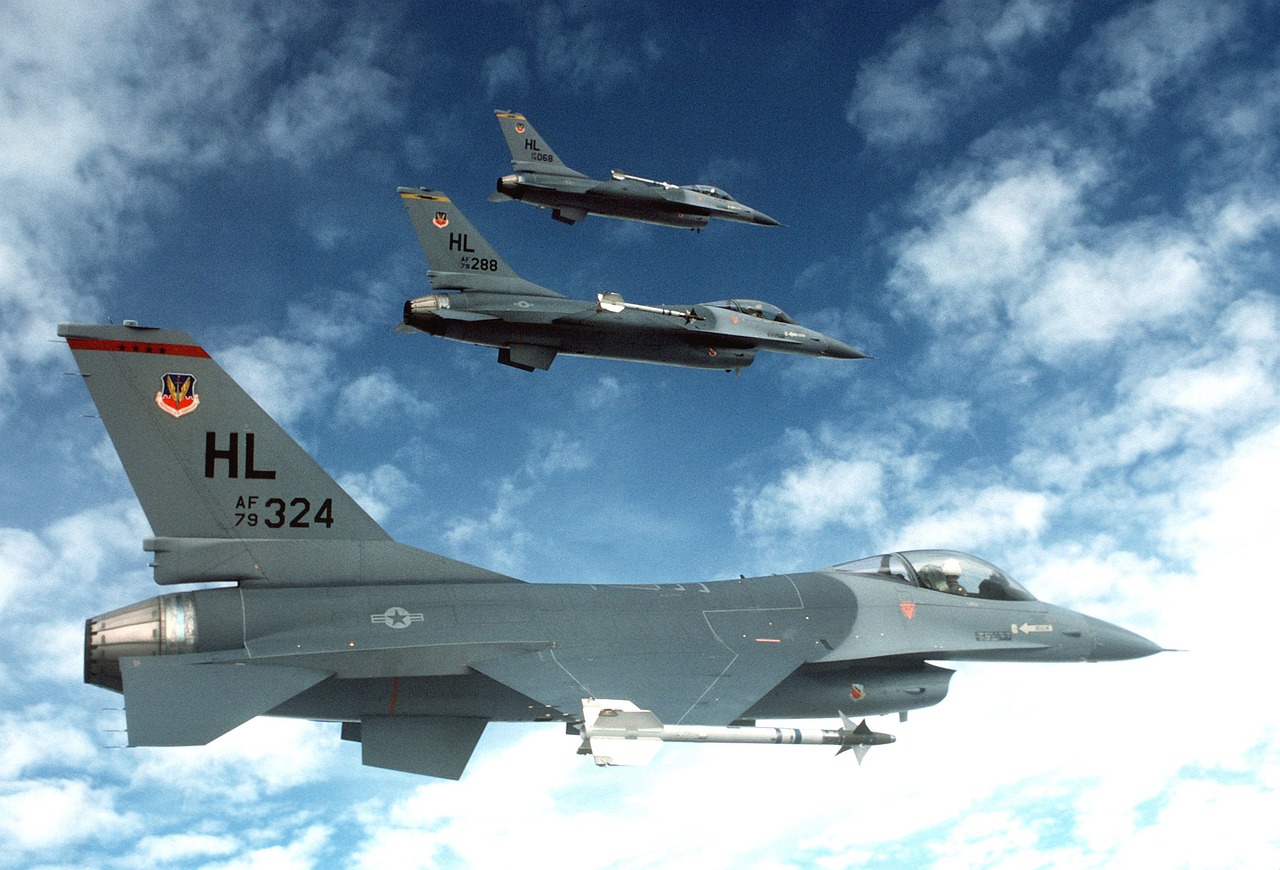
The Role of Automation in Military Logistics
In the ever-evolving landscape of military operations, automation is not just a buzzword; it's a game-changer. The integration of automated systems into military logistics has become a pivotal factor in enhancing operational efficiency and minimizing human error. Imagine a world where supply chain management runs like a well-oiled machine, where every component is synchronized and optimized for peak performance. That's the promise of automation in military logistics.
At its core, automation simplifies complex processes. Traditional logistics often involves cumbersome manual tasks that are susceptible to errors and delays. By automating these tasks, military organizations can streamline their operations, ensuring that supplies reach their destinations more quickly and reliably. For instance, automated inventory management systems can track stock levels in real-time, alerting personnel when supplies are running low and need replenishment.
Furthermore, automated systems can significantly enhance decision-making processes. With the power of data analytics, military logistics can leverage real-time information to make informed decisions about resource allocation and supply chain management. This is particularly crucial during times of crisis, where every second counts, and the difference between success and failure can hinge on the efficiency of logistical operations.
Consider the role of artificial intelligence (AI) in this context. AI algorithms can analyze vast amounts of data to predict demand, identify potential bottlenecks, and optimize routes for supply delivery. This means that military units can operate with greater agility and responsiveness, adapting to changing conditions on the ground without the delays associated with traditional logistics methods.
Moreover, the use of automation extends beyond mere efficiency gains. It also enhances safety. By reducing the need for human intervention in high-risk environments, automated systems can mitigate the dangers faced by military personnel. For example, autonomous vehicles can transport supplies in combat zones, minimizing the exposure of soldiers to potential threats.
In summary, the role of automation in military logistics is multifaceted and transformative. It not only streamlines operations and enhances decision-making but also improves safety for personnel. As we continue to explore the potential of automated systems, it's clear that the future of military logistics is not just about keeping pace with technological advancements; it's about leveraging these innovations to achieve operational excellence.
- What is military logistics automation? Military logistics automation refers to the use of automated systems and technologies to streamline and enhance logistics operations within military organizations.
- How does automation improve efficiency in military logistics? Automation reduces the need for manual tasks, minimizes human error, and allows for real-time data analysis, which leads to faster decision-making and more reliable supply chain management.
- What technologies are commonly used in military logistics automation? Technologies such as artificial intelligence, robotics, and the Internet of Things (IoT) are commonly employed to automate various logistics processes.
- Are there any risks associated with military logistics automation? Yes, challenges such as cybersecurity vulnerabilities and integration issues with existing systems can pose significant risks to automated logistics operations.
- What is the future outlook for military logistics automation? The future of military logistics automation is promising, with ongoing advancements in technology expected to further enhance efficiency, safety, and operational effectiveness.
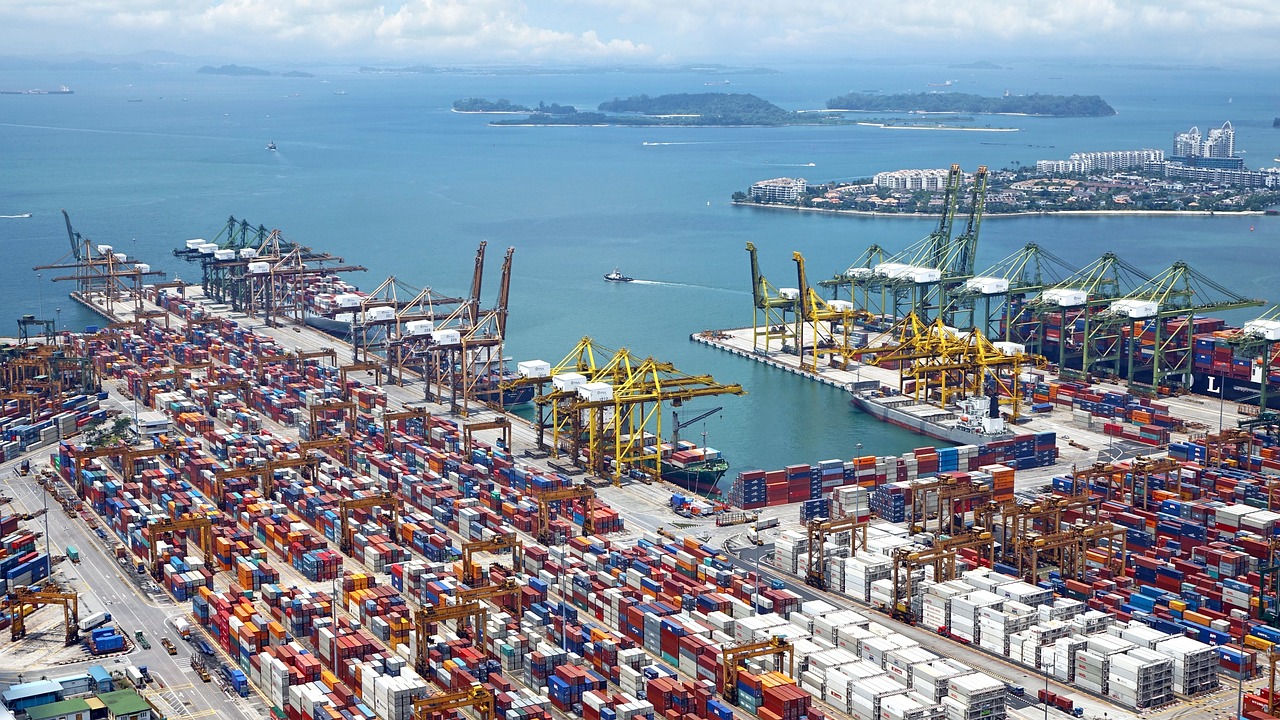
Technological Innovations Driving Change
The landscape of military logistics is undergoing a seismic shift, thanks to groundbreaking technological innovations that are reshaping how operations are conducted. As we delve into this fascinating realm, it's essential to recognize that the integration of advanced technologies is not just a trend; it's a necessity for modern military effectiveness. With the rise of Artificial Intelligence (AI), robotics, and the Internet of Things (IoT), the future of military logistics automation is brighter than ever.
One of the most significant advancements is the application of AI in logistics operations. AI algorithms are being employed to analyze vast amounts of data, enabling military planners to make informed decisions swiftly. Imagine having a digital assistant that can process information faster than any human could, predicting supply needs based on historical data and current situations. This capability not only enhances operational efficiency but also minimizes the risk of human error, which can be critical in high-stakes environments.
Additionally, robotics are playing a pivotal role in automating various logistics processes. From warehousing to inventory management, robotic systems are streamlining operations and reducing the burden on human personnel. For instance, automated guided vehicles (AGVs) are now commonplace in military warehouses, transporting supplies with precision and speed. This not only saves time but also allows human operators to focus on more complex tasks that require critical thinking and decision-making.
The Internet of Things (IoT) is another game-changer in military logistics. By connecting various devices and systems, IoT enables real-time tracking of assets and supplies. Picture a scenario where every piece of equipment is tagged with a sensor, providing instant updates on its location and status. This level of visibility is invaluable for military operations, as it allows for better resource allocation and timely responses to logistical challenges. The ability to monitor inventory levels in real-time ensures that troops are always equipped with what they need, when they need it.
To illustrate the impact of these technological innovations, consider the following table that highlights key advancements in military logistics:
| Technology | Application | Benefits |
|---|---|---|
| Artificial Intelligence | Data analysis and decision-making | Increased efficiency, reduced errors |
| Robotics | Automated warehousing and transportation | Faster operations, less human labor |
| Internet of Things | Real-time asset tracking | Improved visibility, better resource management |
As we look to the future, it's clear that these technological advancements are not just enhancing military logistics; they are fundamentally transforming the way military operations are conducted. The convergence of AI, robotics, and IoT is paving the way for a more efficient, responsive, and adaptable military logistics framework. This evolution is crucial in ensuring that armed forces can meet the challenges of modern warfare, where speed and accuracy are paramount.
- What is military logistics automation? Military logistics automation refers to the use of technology to streamline and enhance logistics operations, reducing the need for manual intervention and improving efficiency.
- How does AI improve military logistics? AI improves military logistics by analyzing data to optimize supply chain management, predict needs, and enhance decision-making processes.
- What role do robots play in military logistics? Robots automate various logistics tasks such as transportation, warehousing, and inventory management, allowing human personnel to focus on more strategic activities.
- What are the benefits of IoT in military logistics? IoT provides real-time tracking of assets and supplies, improving visibility and enabling better resource allocation during military operations.

Artificial Intelligence Applications
In the rapidly evolving landscape of military logistics, Artificial Intelligence (AI) is emerging as a game changer. Imagine a world where logistics operations are not only efficient but also intelligent. AI algorithms are being deployed to analyze vast amounts of data, enabling military organizations to make informed decisions swiftly. This capability is crucial in scenarios where every second counts, such as during combat operations or humanitarian missions.
One of the primary applications of AI in military logistics is in resource allocation. By leveraging machine learning algorithms, military planners can predict the necessary resources for specific missions based on historical data and real-time conditions. For instance, AI can analyze weather patterns, troop movements, and supply chain statuses to optimize the distribution of resources. This predictive capability ensures that the right supplies are available at the right time and place, significantly reducing the risk of shortages.
Moreover, AI enhances decision-making processes. With AI systems capable of processing and analyzing data faster than any human, military logistics personnel can focus on strategic planning rather than getting bogged down by data analysis. These systems can identify patterns and suggest optimal courses of action, thereby increasing operational efficiency. For example, AI can recommend the most efficient routes for supply transport, taking into account factors like traffic conditions, enemy activity, and terrain.
Another exciting application of AI in military logistics is in the realm of maintenance and repair. Predictive maintenance powered by AI allows military units to anticipate equipment failures before they occur. By analyzing usage data and performance metrics, AI can forecast when a piece of equipment is likely to need maintenance, allowing for timely interventions that minimize downtime. This proactive approach not only saves time and resources but also enhances the overall readiness of military operations.
To illustrate the impact of AI on military logistics, consider the following table that summarizes key applications and their benefits:
| AI Application | Benefits |
|---|---|
| Resource Allocation | Optimizes supply distribution based on predictive analytics. |
| Decision-Making | Enhances operational efficiency through data-driven insights. |
| Predictive Maintenance | Reduces downtime by anticipating equipment failures. |
As we look to the future, the integration of AI into military logistics is set to deepen. The ongoing advancements in AI technology promise even more sophisticated applications, such as autonomous supply chains that can operate with minimal human intervention. The potential for AI to revolutionize military logistics is immense, making it an exciting area to watch as we move forward.
- What is the role of AI in military logistics?
AI plays a crucial role in optimizing logistics operations by enhancing resource allocation, improving decision-making processes, and enabling predictive maintenance. - How does AI improve decision-making in logistics?
AI analyzes vast amounts of data quickly, allowing military planners to make informed decisions based on real-time conditions and historical data. - What are the benefits of predictive maintenance in military logistics?
Predictive maintenance helps anticipate equipment failures, reducing downtime and ensuring that military operations remain efficient and effective.
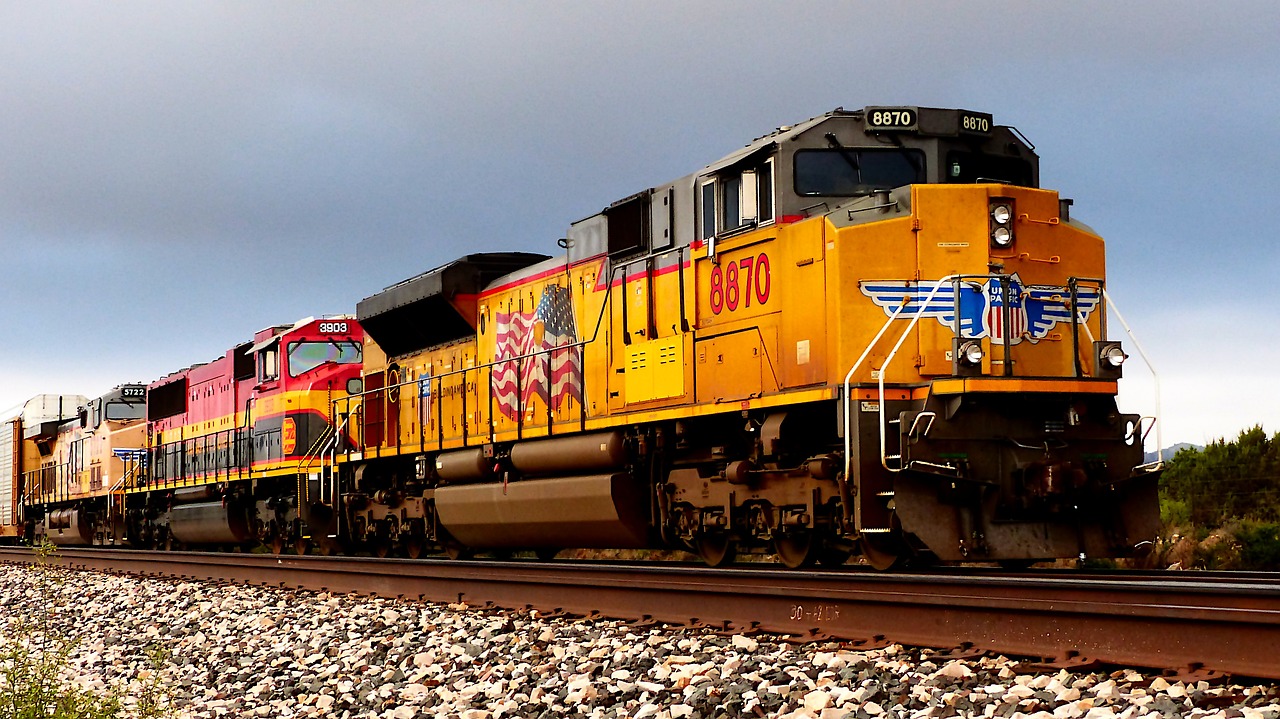
Predictive Analytics for Supply Chain Management
In the fast-paced world of military logistics, predictive analytics has emerged as a game-changer, providing a strategic edge that was once unimaginable. Imagine being able to foresee logistical needs before they arise, much like a seasoned chess player anticipating their opponent's moves. This powerful technology leverages historical data, machine learning, and statistical algorithms to project future outcomes, enabling military planners to make informed decisions that optimize resource allocation and enhance operational efficiency.
At its core, predictive analytics analyzes vast amounts of data to identify patterns and trends, which can be incredibly beneficial in military contexts. For instance, by examining past supply chain performance, military logistics teams can predict potential shortages or delays in critical supplies. This proactive approach allows for timely interventions, ensuring that troops are always equipped with the necessary resources when they need them the most. The ability to forecast demand accurately not only streamlines inventory management but also minimizes waste and reduces costs.
Moreover, the integration of predictive analytics in supply chain management can significantly improve the military's responsiveness to unforeseen circumstances. For example, during a deployment, if an unexpected surge in demand for specific equipment occurs, predictive analytics can quickly analyze the situation and recommend adjustments to the supply chain. This agility is crucial in military operations, where the stakes are high, and the environment can change in an instant.
To illustrate the impact of predictive analytics, consider the following table that outlines its key benefits in military logistics:
| Benefit | Description |
|---|---|
| Enhanced Forecasting | Utilizes historical data to predict future supply needs accurately. |
| Improved Resource Allocation | Optimizes the distribution of supplies based on predicted demand. |
| Cost Reduction | Minimizes waste and unnecessary expenditures through precise planning. |
| Increased Agility | Allows quick adaptations to changing circumstances in the field. |
In essence, predictive analytics not only enhances the operational capabilities of military logistics but also fosters a culture of data-driven decision-making. As military organizations continue to embrace this technology, they will likely see a transformation in how they manage their supply chains, leading to improved efficiency and effectiveness on the battlefield.
- What is predictive analytics? Predictive analytics involves using historical data and algorithms to forecast future events, helping organizations make informed decisions.
- How does predictive analytics benefit military logistics? It enhances forecasting, improves resource allocation, reduces costs, and increases agility in responding to operational changes.
- What technologies are used in predictive analytics? Common technologies include machine learning, data mining, and statistical analysis tools.
- Can predictive analytics be integrated with existing military systems? Yes, but it requires careful planning and consideration of interoperability with legacy systems.
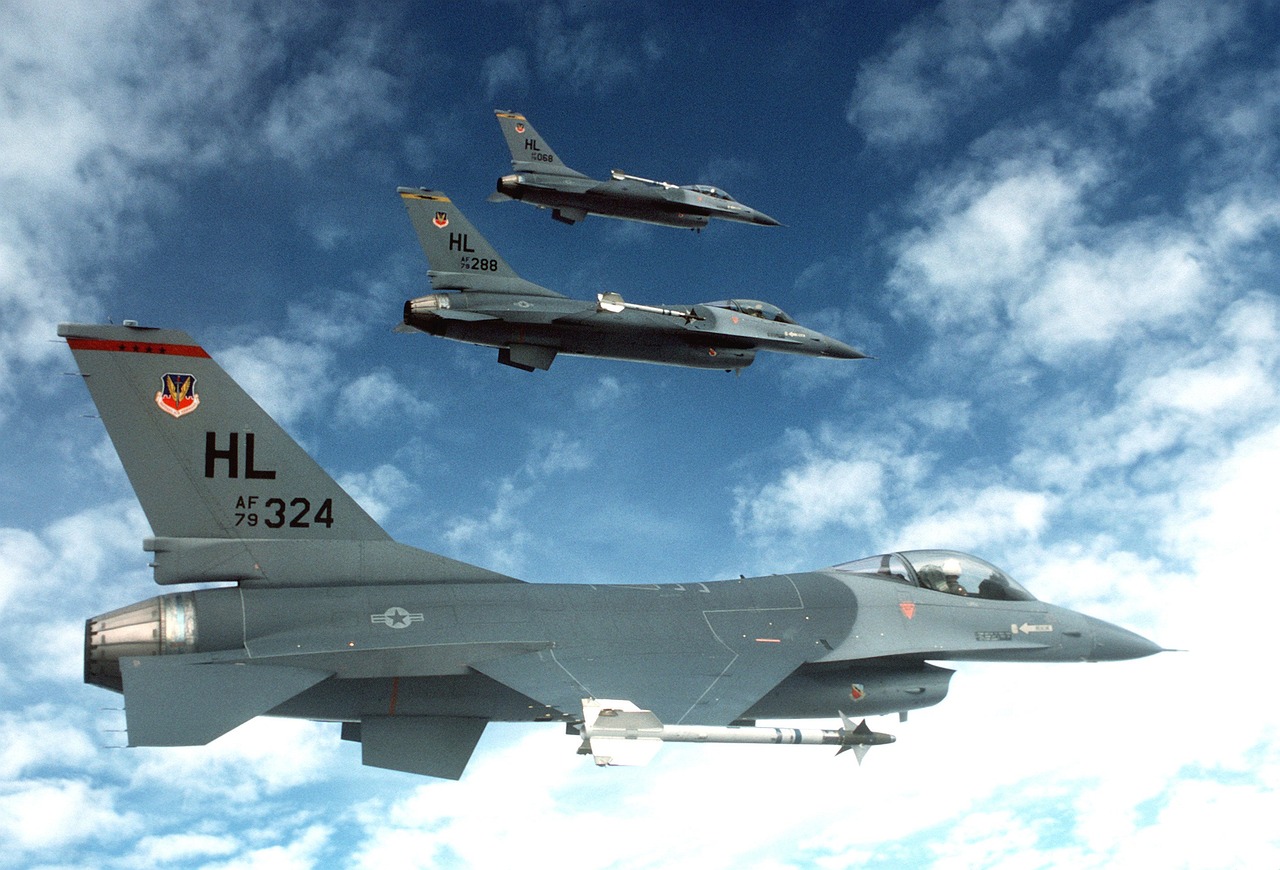
AI-Powered Autonomous Vehicles
The realm of military logistics is undergoing a significant transformation, and at the forefront of this evolution are . These cutting-edge machines are not just a futuristic concept; they are already being deployed in various military operations, revolutionizing how supplies are transported and managed on the battlefield. Imagine a convoy of unmanned vehicles, efficiently navigating through treacherous terrain while delivering essential supplies to troops in need. This is not science fiction—it's the reality of modern military logistics.
One of the most critical advantages of using autonomous vehicles in military logistics is their ability to operate in challenging environments where human presence may be risky or impractical. For instance, during combat scenarios, sending human drivers into potentially hostile areas can expose them to danger. Autonomous vehicles can be programmed to traverse these zones, reducing risk and ensuring that vital resources reach their destination without endangering lives. This capability is akin to having a robotic supply line that can adapt to the unpredictable nature of warfare.
Moreover, these vehicles are equipped with advanced sensors and AI algorithms that allow them to make real-time decisions. This means they can avoid obstacles, reroute themselves in the event of unexpected hazards, and even communicate with other vehicles to optimize their routes. For example, if one vehicle encounters a blockage, it can instantly relay this information to others in the convoy, ensuring that the entire operation remains efficient and effective. It's like having a team of highly trained soldiers working together, but in this case, they are machines operating with precision and speed.
Another exciting aspect of AI-powered autonomous vehicles is their potential for logistical efficiency. By automating transportation, military operations can reduce delays and enhance supply chain responsiveness. This is particularly important in critical situations where time is of the essence. With autonomous vehicles, the military can ensure that supplies are delivered promptly, which can be the difference between success and failure in a mission. It’s a bit like having a personal assistant who knows exactly when and where to deliver your needs without you having to lift a finger.
As we look to the future, the integration of AI-powered autonomous vehicles into military logistics will likely expand. They will not only be used for supply delivery but could also play roles in reconnaissance and surveillance missions, gathering intelligence while remaining undetected. The versatility of these vehicles positions them as essential tools in modern military operations, promising to enhance both efficiency and effectiveness.
In summary, AI-powered autonomous vehicles represent a significant leap forward in military logistics. Their ability to operate independently, make real-time decisions, and enhance logistical efficiency makes them indispensable in modern warfare. As technology continues to advance, we can expect these vehicles to become even more integral to military operations, paving the way for a future where logistics is not just automated but optimized for every conceivable scenario.
- What are AI-powered autonomous vehicles?
They are unmanned vehicles equipped with artificial intelligence that allows them to navigate and operate without human intervention. - How do these vehicles enhance military logistics?
They improve efficiency by reducing the need for human drivers in dangerous areas, optimizing supply routes, and delivering resources promptly. - Can autonomous vehicles operate in combat zones?
Yes, they are designed to navigate challenging environments and can be deployed in combat zones to deliver supplies safely. - What technologies are used in autonomous vehicles?
They utilize advanced sensors, AI algorithms, and real-time communication systems to operate effectively. - Will AI-powered vehicles replace human drivers entirely?
While they will significantly reduce the need for human drivers, there will still be roles for personnel in overseeing and managing these operations.

Robotics and Automation Systems
In the ever-evolving world of military logistics, are not just buzzwords; they represent a seismic shift in how operations are conducted. Imagine a world where soldiers no longer have to manually transport supplies through treacherous terrains, but instead, rely on autonomous robots to do the heavy lifting. This transformation is not a distant dream; it is happening right now, and it is revolutionizing the efficiency of logistics operations.
Robots are being deployed in various capacities, from warehousing to inventory management, and even in the transportation of goods. For instance, consider the use of automated guided vehicles (AGVs) in warehouses. These robots can navigate complex environments, transporting supplies from one location to another without human intervention. This not only speeds up the process but also reduces the risk of injury to personnel. Moreover, the precision of robotics minimizes the chances of human error, ensuring that the right supplies reach the right place at the right time.
One of the most exciting aspects of robotics in military logistics is their ability to operate in hazardous environments. For example, during a conflict, the risk of sending human operators into dangerous zones is significantly mitigated by using robots for supply delivery. These machines can traverse rough terrains, navigate through obstacles, and even perform tasks in environments that are considered too risky for human involvement. The implications of this capability are profound, as it not only enhances operational efficiency but also protects lives.
Furthermore, the integration of robotics with Internet of Things (IoT) technology creates a network of interconnected devices that can communicate with each other. This synergy allows for real-time monitoring and data collection, enabling military logistics teams to make informed decisions quickly. For example, a robot equipped with sensors can send data back to a central command about inventory levels, alerting personnel when stocks are running low. This level of automation ensures that supply chains remain fluid and responsive to changing demands.
However, the deployment of robotics in military logistics is not without its challenges. While these systems can significantly enhance efficiency, they also require a robust infrastructure and skilled personnel to operate and maintain them. The transition to a fully automated logistics system necessitates comprehensive training programs to equip military personnel with the knowledge and skills needed to work alongside these advanced technologies.
In conclusion, the role of robotics and automation systems in military logistics is set to expand dramatically. As technology continues to advance, we can expect to see even more sophisticated systems that can handle complex logistics tasks, further reducing the burden on human operators and increasing the overall effectiveness of military operations.
- What are the main benefits of using robotics in military logistics?
Robotics enhance efficiency, reduce human error, and improve safety by performing tasks in hazardous environments. - How do robots communicate in a military logistics setting?
Robots can be equipped with IoT technology, allowing them to send real-time data and updates to central command. - What challenges do military organizations face when implementing robotics?
Key challenges include the need for robust infrastructure, integration with existing systems, and training personnel to operate new technologies.
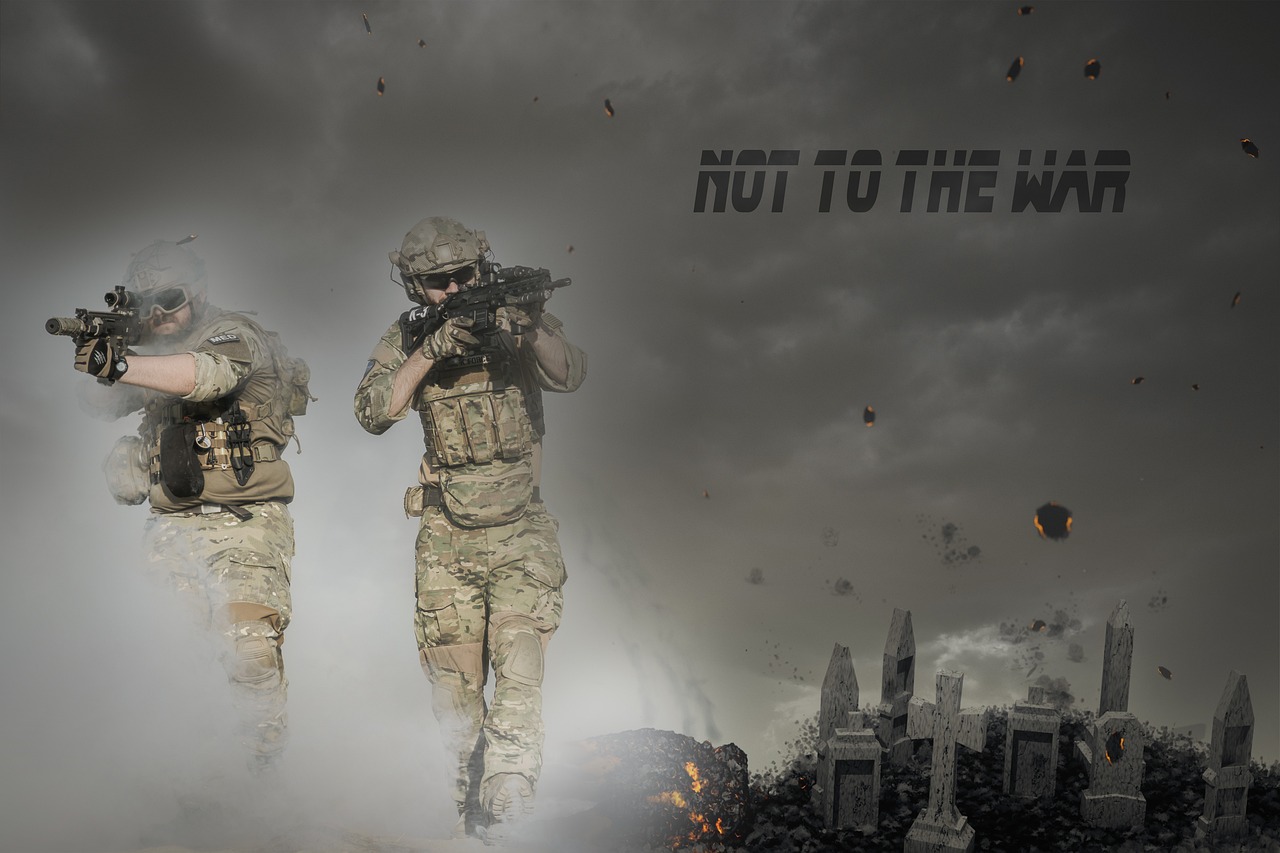
Challenges and Limitations of Automation
As we dive into the world of military logistics automation, it's important to recognize that, while the benefits of automation are substantial, there are also significant challenges and limitations that need to be addressed. The integration of automated systems into military logistics presents a double-edged sword, where the promise of enhanced efficiency and reduced human error is often countered by potential vulnerabilities and obstacles. One of the most pressing issues is the cybersecurity risks associated with automated systems. As military operations increasingly rely on interconnected technologies, the threat of cyber attacks looms large, posing risks to sensitive data and operational integrity.
Moreover, the integration with existing systems is another hurdle that cannot be overlooked. Many military organizations operate with legacy systems that were not designed to accommodate modern automated technologies. This often leads to compatibility issues, where new solutions struggle to communicate effectively with older systems, resulting in inefficiencies and operational delays. For instance, if an automated supply chain management system cannot interface with a legacy inventory tracking system, it could lead to miscommunications and stock shortages, which can be detrimental in critical situations.
Additionally, the need for skilled personnel to manage and maintain these automated systems cannot be understated. While automation can reduce the need for manual labor, it simultaneously creates a demand for individuals who possess the technical know-how to operate, troubleshoot, and optimize these advanced systems. This shifting skill requirement can lead to workforce shortages, especially in an environment where military personnel are often required to multitask across various roles.
Furthermore, the cost of implementation can be prohibitive. Developing, deploying, and maintaining automated systems often requires significant investments in technology and training. For many military organizations, especially those with limited budgets, the financial burden can be a substantial barrier to adopting automation. As a result, some may find themselves stuck in a cycle of outdated practices, unable to leverage the full potential of automation.
In summary, while military logistics automation holds tremendous promise for improving operational efficiency, it is crucial to navigate the challenges it presents. Addressing cybersecurity concerns, ensuring seamless integration with existing systems, cultivating a skilled workforce, and managing implementation costs are all critical factors that will determine the success of automation in military logistics. As we move forward, these challenges will require innovative solutions and strategic planning to fully realize the benefits of a more automated military supply chain.
- What are the main challenges of military logistics automation?
Key challenges include cybersecurity risks, integration with legacy systems, the need for skilled personnel, and high implementation costs. - How does cybersecurity impact military logistics automation?
The reliance on interconnected technologies increases the vulnerability to cyber attacks, which can compromise sensitive information and operational capabilities. - Why is integration with existing systems a concern?
Legacy systems may not be compatible with new automated technologies, leading to inefficiencies and operational delays. - What skills are needed for managing automated logistics systems?
Personnel need technical expertise in operating, troubleshooting, and optimizing automated technologies to ensure smooth operations. - Are the costs of implementing automation a significant barrier?
Yes, the financial investment required for technology and training can be a substantial obstacle for military organizations.

Cybersecurity Concerns
As military logistics automation continues to evolve, one of the most pressing issues that arise is cybersecurity. The integration of advanced technologies into military supply chains creates a larger attack surface for potential threats. Imagine a world where automated systems manage everything from supply deliveries to inventory tracking—while this sounds efficient, it also opens the door for cybercriminals and hostile entities to exploit vulnerabilities. The stakes are incredibly high, as a successful cyber attack could lead to significant operational failures, compromising not only logistics but also the safety of personnel on the ground.
Automated systems rely heavily on networks and data sharing, which can be a double-edged sword. On one hand, it enhances communication and coordination; on the other, it introduces risks such as data breaches, ransomware attacks, and system hijacking. For instance, if an enemy were to gain access to a military logistics system, they could manipulate supply routes, delay essential shipments, or even redirect resources to their advantage. The consequences could be catastrophic, leading to mission failures and loss of life.
To mitigate these risks, military organizations must adopt a multi-layered cybersecurity approach. This includes:
- Regular System Audits: Conducting frequent assessments of automated systems to identify vulnerabilities.
- Employee Training: Ensuring personnel are well-versed in cybersecurity practices to recognize potential threats.
- Advanced Encryption Techniques: Implementing robust encryption to protect sensitive data during transmission.
- Incident Response Plans: Developing comprehensive strategies to respond quickly and effectively to any security breach.
Moreover, the implementation of artificial intelligence in cybersecurity can play a pivotal role in enhancing defense mechanisms. AI algorithms can analyze patterns and detect anomalies in real-time, providing an early warning system against potential threats. This proactive approach can significantly reduce the risk of successful cyber attacks, ensuring that military logistics operations remain secure and efficient.
In conclusion, while the automation of military logistics offers numerous advantages, it also necessitates a serious commitment to cybersecurity. As we look toward the future, it is crucial for military organizations to prioritize cybersecurity measures to protect their automated systems from emerging threats. The battlefield is no longer just a physical space; it's also a digital one, and safeguarding against cyber threats is essential for maintaining operational integrity and effectiveness.
- What are the main cybersecurity threats to military logistics automation?
The main threats include data breaches, ransomware attacks, and system hijacking, which can compromise operational integrity. - How can military organizations mitigate cybersecurity risks?
By conducting regular system audits, training personnel, implementing advanced encryption, and developing incident response plans. - What role does AI play in enhancing cybersecurity?
AI can analyze patterns and detect anomalies in real-time, providing early warnings against potential threats. - Why is cybersecurity important in military logistics?
Because a successful cyber attack could lead to mission failures, operational disruptions, and jeopardize the safety of personnel.

Integration with Existing Systems
Integrating new automated technologies with existing military logistics systems is akin to fitting a new puzzle piece into an already complex picture. It's not just about slapping on a shiny new gadget; it’s about ensuring that everything works seamlessly together. The military has long relied on legacy systems that have been in place for decades, and while these systems have served their purpose, they often lack the flexibility and adaptability that modern automation requires. This creates a significant challenge for military logistics planners who must navigate the waters of integration without causing disruptions to ongoing operations.
One of the primary hurdles in this integration process is the compatibility of new technologies with older systems. Many legacy systems were not designed with interoperability in mind, meaning that they may not easily communicate with newer automated solutions. To overcome this, military logistics teams must conduct thorough assessments of existing infrastructure and identify potential integration points. This often involves customizing new technologies or even retrofitting older systems to ensure they can work in harmony.
Moreover, the integration process demands a comprehensive understanding of both the technological landscape and the specific operational requirements of military logistics. This is where collaboration becomes crucial. By fostering partnerships between technology providers and military logistics experts, organizations can develop tailored solutions that address unique challenges. For instance, if a military branch decides to implement an AI-driven inventory management system, it must ensure that this system can pull data from existing databases and communicate effectively with other logistics platforms.
Another aspect to consider is the training and adaptation of personnel. As new technologies are introduced, military staff must be equipped with the knowledge and skills to operate them effectively. This may require extensive training sessions and hands-on workshops to familiarize personnel with the new systems. After all, what good is a state-of-the-art automated logistics system if the people using it don’t know how to maximize its capabilities?
To facilitate smoother integration, military logistics leaders can adopt a phased approach. This involves gradually introducing new technologies while continuously evaluating their performance and impact on existing operations. By doing so, they can identify any issues early on and make necessary adjustments before fully committing to a new system. This not only reduces the risk of operational disruptions but also allows for a more controlled transition to automation.
Lastly, it’s essential to prioritize cybersecurity in the integration process. As military logistics becomes more automated, the potential for cyber threats increases. Ensuring that new systems are secure and can withstand potential attacks is critical. This means implementing robust security protocols and continuously monitoring systems for vulnerabilities. The last thing any military operation needs is a breach that compromises sensitive logistics data.
In summary, integrating new automated technologies with existing military logistics systems is a multifaceted challenge that requires careful planning, collaboration, and ongoing training. By addressing compatibility issues, investing in personnel development, and prioritizing cybersecurity, military organizations can pave the way for a more efficient and effective logistics operation that harnesses the power of automation.
- What are the main challenges of integrating new technologies into military logistics?
The main challenges include compatibility with legacy systems, the need for extensive training of personnel, and ensuring robust cybersecurity measures. - How can military organizations ensure successful integration?
By conducting thorough assessments of existing infrastructure, fostering partnerships with technology providers, and adopting a phased approach to implementation. - Why is cybersecurity important in military logistics automation?
As logistics systems become more automated, they become potential targets for cyber threats. Ensuring cybersecurity is crucial to protect sensitive data and maintain operational integrity. - What role does training play in the integration process?
Training is vital to ensure that personnel are familiar with new technologies and can use them effectively to enhance logistics operations.

The Future of Military Logistics Automation
The future of military logistics automation is not just a glimpse of what could be; it’s an exciting reality that’s unfolding right before our eyes. As we stand on the brink of a technological revolution, the military logistics landscape is set to undergo a profound transformation. Imagine a world where supplies are delivered autonomously, where data analytics predict logistical needs with pinpoint accuracy, and where human error is drastically minimized. This isn’t science fiction; it’s the future we’re rapidly approaching.
One of the most significant trends shaping this future is the increased reliance on artificial intelligence (AI). AI will not only streamline supply chain processes but also enhance decision-making capabilities. With advanced algorithms analyzing vast amounts of data in real-time, military operations can anticipate needs and allocate resources more effectively. For instance, predictive models can forecast demand spikes based on historical data, allowing for proactive inventory management. This shift towards data-driven logistics will ensure that military units are always equipped with the necessary supplies, enhancing operational readiness.
Another exciting development is the rise of autonomous vehicles in military logistics. These vehicles are not just limited to transporting goods; they can also navigate complex environments and deliver supplies directly to the front lines. Imagine a convoy of drones and unmanned ground vehicles working in harmony, ensuring that troops receive essential supplies without risking human lives. This level of automation will not only improve efficiency but also enhance safety, allowing human personnel to focus on more critical tasks.
Moreover, the integration of Internet of Things (IoT) technology will play a pivotal role in the future of military logistics. With IoT devices connected throughout the supply chain, real-time tracking and monitoring of assets will become the norm. This connectivity will provide military leaders with unprecedented visibility into their operations, enabling them to make informed decisions quickly. For example, if a shipment is delayed, commanders can instantly reroute resources or adjust operations accordingly, minimizing disruptions.
However, as we look to the future, it’s essential to acknowledge the challenges that accompany these advancements. The implementation of automated systems requires significant investment in infrastructure and training. Military personnel must be equipped with the skills to operate and maintain these new technologies, ensuring a smooth transition from traditional methods. Additionally, cybersecurity concerns loom large as automated systems become more prevalent. Protecting sensitive data and ensuring the integrity of logistics operations will be paramount in this new era.
In conclusion, the future of military logistics automation is bright and full of potential. With advancements in AI, autonomous vehicles, and IoT technology, military operations will become more efficient, effective, and safe. As we embrace these changes, the focus must remain on overcoming the challenges that lie ahead, ensuring that our armed forces are equipped with the best tools available to succeed in their missions.
- What is military logistics automation?
Military logistics automation refers to the use of technology and automated systems to streamline and enhance the processes involved in the supply chain and logistics operations of the military.
- How does AI improve military logistics?
AI improves military logistics by optimizing decision-making, predicting logistical needs, and enhancing resource allocation through advanced data analytics.
- What are autonomous vehicles used for in military logistics?
Autonomous vehicles are used for transporting supplies, navigating complex environments, and delivering goods directly to operational areas without risking human lives.
- What challenges does military logistics automation face?
Challenges include the need for significant investment in infrastructure, training personnel to operate new technologies, and addressing cybersecurity concerns.
Frequently Asked Questions
-
What is military logistics automation?
Military logistics automation refers to the use of advanced technologies, such as artificial intelligence, robotics, and the Internet of Things (IoT), to streamline and enhance military supply chain operations. By automating various processes, the military aims to improve efficiency, reduce human error, and ensure timely delivery of resources.
-
How does automation improve military logistics?
Automation improves military logistics by optimizing supply chain management, enhancing decision-making, and increasing the speed of operations. Automated systems can quickly analyze data and predict logistical needs, which helps in better resource allocation and minimizes delays in critical situations.
-
What technologies are driving military logistics automation?
Key technologies driving military logistics automation include artificial intelligence (AI), robotics, and predictive analytics. AI enhances decision-making processes, while robotics automate tasks like warehousing and transportation. Predictive analytics helps forecast demand and optimize inventory management.
-
What are the challenges of implementing automation in military logistics?
Implementing automation in military logistics comes with challenges such as cybersecurity risks, integration issues with existing systems, and the need for skilled personnel. Ensuring the security of automated systems is crucial, as vulnerabilities can be exploited by adversaries.
-
How does AI contribute to military logistics?
AI contributes to military logistics by providing advanced algorithms that enhance resource allocation and operational efficiency. It helps in making informed decisions based on real-time data, thereby improving the overall effectiveness of logistics operations.
-
What role do autonomous vehicles play in military logistics?
Autonomous vehicles play a transformative role in military logistics by facilitating the transportation of supplies and equipment without direct human intervention. They can operate in challenging environments, making them ideal for battlefield operations and supply deliveries.
-
What is the future of military logistics automation?
The future of military logistics automation is expected to see significant advancements, including greater integration of AI and robotics, improved predictive analytics, and enhanced cybersecurity measures. These developments will further revolutionize military supply chains, making them more resilient and efficient.


